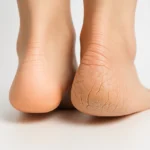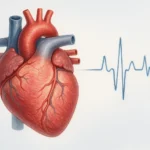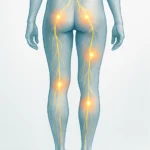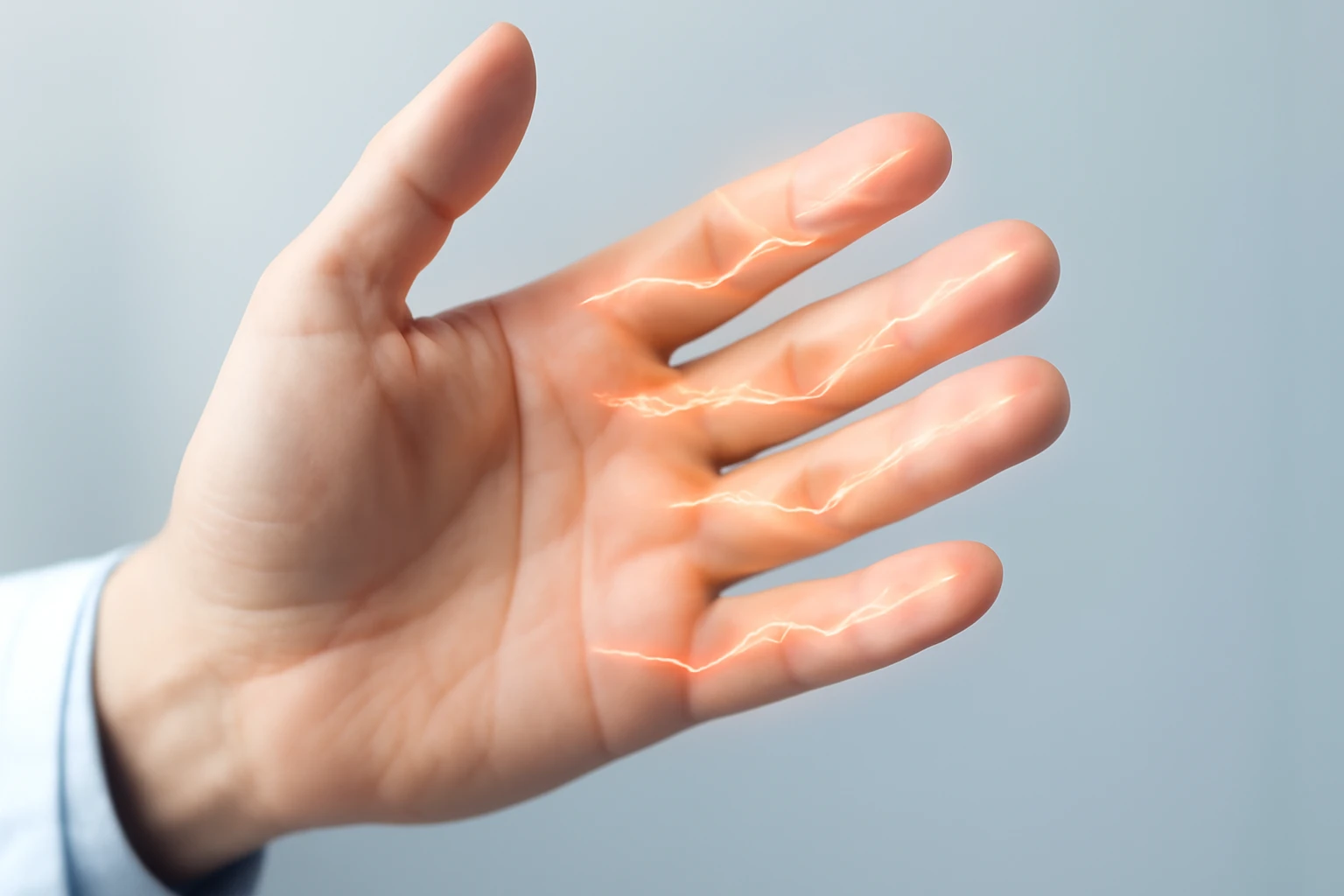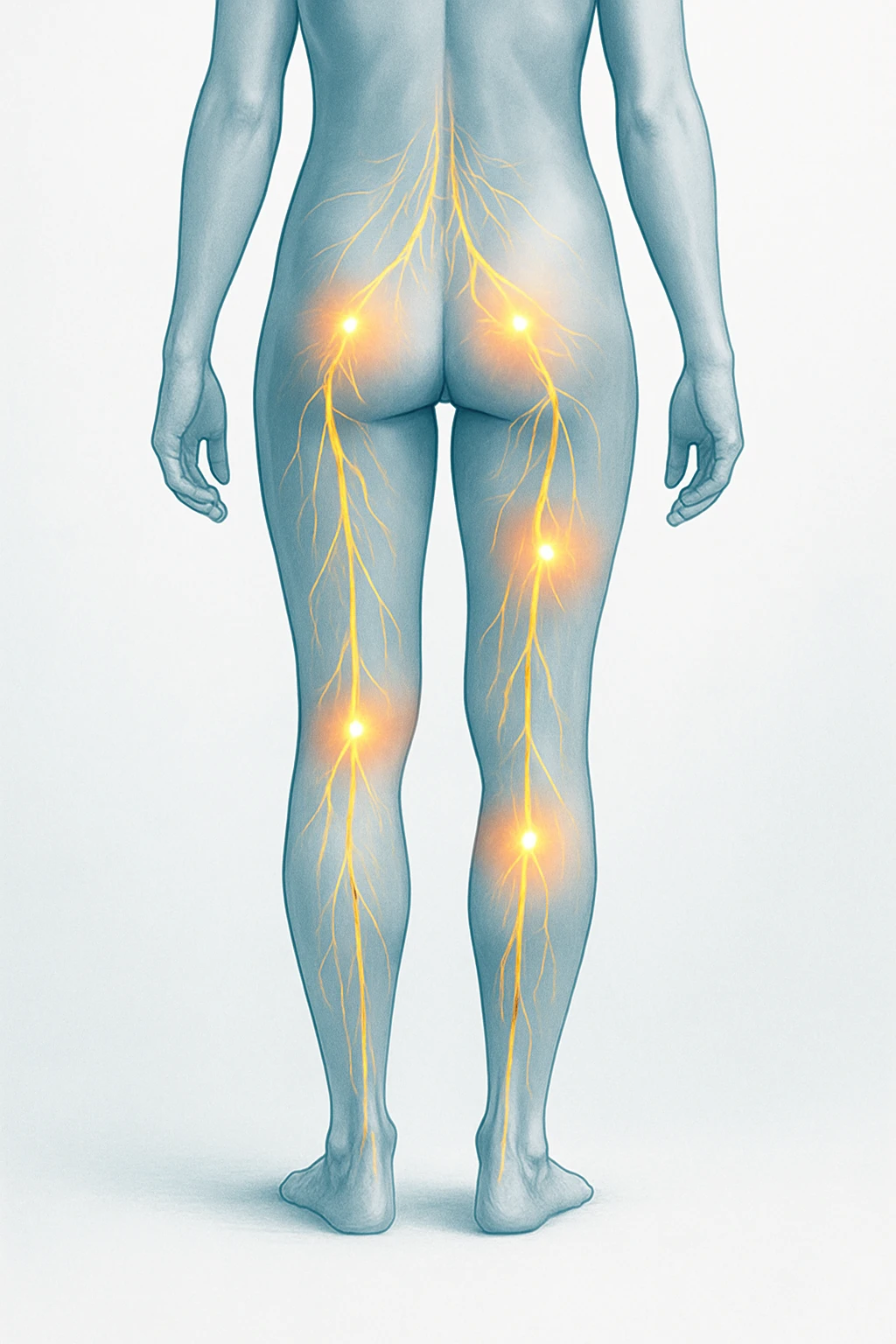
Tingling in Fingers: Identifying Symptoms and Treatment Options
Tingling in Fingers
Tingling in the fingers, often described as a sensation of ‘pins and needles,’ is a common experience that many people encounter at some point. This sensation typically occurs when pressure is placed on the nerves, such as when an arm or hand falls asleep, but it can also be a symptom of underlying medical conditions.
While occasional tingling is usually harmless and temporary, persistent or frequent episodes can indicate more serious health issues. Conditions such as nerve compression, diabetes, and vitamin deficiencies can all contribute to tingling in the fingers. Understanding the potential causes of tingling in the fingers is essential in addressing any underlying health concerns effectively.
- Nerve Compression: Pressure applied to nerves, leading to tingling in the fingers.
- Diabetes: Can cause diabetic neuropathy, leading to tingling in the fingers.
- Vitamin Deficiencies: Deficiency of B vitamins affects nerve function, causing tingling sensations.
Common Causes of Tingling in Fingers
Tingling in the fingers can arise from a variety of causes, ranging from temporary pressure on nerves to underlying systemic conditions. Identifying these causes is crucial for determining the source of the tingling sensation. Below are some of the most common causes:
-
Nerve Compression and Carpal Tunnel Syndrome
Nerve compression, such as in carpal tunnel syndrome, is one of the most frequent causes of tingling in the fingers. This occurs when a nerve is pinched, often affecting the thumb, index, and middle fingers. The pressure on the median nerve in the wrist leads to tingling, numbness, and weakness.
-
Systemic Conditions: Diabetes and Thyroid Disorders
Conditions like diabetes and thyroid disorders can also lead to tingling in the fingers. Diabetes, particularly when poorly controlled, causes diabetic neuropathy, affecting hands and feet. Similarly, thyroid disorders like hypothyroidism lead to peripheral neuropathy, resulting in tingling and numbness in various body parts, including the fingers.
-
Vitamin Deficiencies and Alcohol Use
Vitamin deficiencies, particularly B vitamins, impair nerve function and contribute to tingling. Alcohol abuse can damage nerves, leading to alcoholic neuropathy, a common cause of tingling in the fingers.
Recognizing Symptoms and Their Impact
Tingling in the fingers often occurs with other sensations, such as numbness or weakness. The progression of these symptoms can provide valuable insights into the underlying cause of the condition.
Progressive and Persistent Symptoms
Tingling in the fingers may worsen over time. What starts as a temporary sensation can become persistent, especially if the underlying cause remains untreated. As nerve damage progresses, tingling may be accompanied by increasing numbness and weakness, signaling more serious issues like nerve damage or systemic conditions that require prompt medical attention.
Specific Symptoms in Carpal Tunnel Syndrome
Carpal tunnel syndrome causes tingling in the thumb, index, and middle fingers. This condition results from pressure on the median nerve in the wrist, with symptoms often worsening at night. If untreated, it may lead to long-term nerve damage.
- Progressive Symptoms: Tingling that worsens over time, accompanied by increasing numbness and weakness, may signal nerve damage.
- Carpal Tunnel Syndrome: Tingling and numbness in the thumb, index, and middle fingers, often worsening at night.
Diagnosing the Cause of Tingling in Fingers
Diagnosing the cause of tingling in the fingers involves a detailed medical history, physical examination, and sometimes laboratory tests or imaging studies to identify underlying conditions.
Physical Exam and Patient History
A thorough medical history and physical exam are key to identifying the cause of tingling. The doctor will inquire about the onset, duration, and frequency of symptoms, as well as associated symptoms like numbness or weakness. A physical exam checks for nerve compression or other physical abnormalities that could explain the tingling.
Nerve Conduction Studies and EMG
Nerve conduction studies and electromyography (EMG) are commonly used diagnostic tools. Nerve conduction studies measure the speed at which electrical impulses travel through the nerves, helping to identify nerve compression or damage. EMG assesses muscle electrical activity to detect nerve dysfunction. These tests are particularly useful for diagnosing conditions like carpal tunnel syndrome.
- Medical History and Physical Exam: Helps identify contributing factors like pre-existing medical conditions.
- Nerve Conduction Studies: Measures nerve impulse speed to detect nerve compression or damage.
- EMG Testing: Assesses muscle electrical activity to identify dysfunction caused by nerve damage.
Treatment Options for Tingling in Fingers
The treatment for tingling in the fingers depends on the underlying cause. Treatment options vary from non-invasive methods, like physical therapy and lifestyle adjustments, to more aggressive interventions, including medications and surgery.
Conservative Treatments and Lifestyle Adjustments
For many cases, especially those caused by conditions like carpal tunnel syndrome or diabetic neuropathy, conservative treatments are effective. Physical therapy strengthens muscles and improves range of motion, reducing pressure on affected nerves. Ergonomic adjustments, such as wrist supports and workstation modifications, prevent further nerve compression. Managing underlying conditions, such as controlling blood sugar levels in diabetes, is crucial for preventing nerve damage.
Medical Interventions: Medications and Surgery
If conservative treatments fail, medications and surgical options may be necessary. Pain relievers and anti-inflammatory drugs help reduce inflammation and alleviate discomfort. Corticosteroid injections may also reduce swelling and relieve pressure on the median nerve in carpal tunnel syndrome. In severe cases, surgery may be required to release pressure on the nerve and prevent further damage.
- Physical Therapy: Strengthens muscles and improves range of motion to reduce nerve pressure.
- Ergonomic Changes: Adjusting workstations and using wrist supports to prevent further nerve compression.
- Medications: Pain relievers and anti-inflammatory drugs help manage discomfort.
- Corticosteroid Injections: Reduce swelling and pressure on nerves, especially in carpal tunnel syndrome.
- Surgery: Surgical intervention may be necessary to release nerve pressure and prevent long-term damage.
Treatment Options for Tingling in Fingers
The treatment for tingling in the fingers depends on the underlying cause of the symptoms. Treatment options can vary from non-invasive methods, such as physical therapy and lifestyle adjustments, to more aggressive interventions, including medications and surgery, depending on the severity of the condition.
Conservative Treatments and Lifestyle Adjustments
For many cases of tingling in the fingers, particularly those caused by conditions like carpal tunnel syndrome or diabetic neuropathy, conservative treatments can be highly effective. Physical therapy, for example, helps strengthen muscles and improve range of motion, alleviating pressure on the affected nerves. Ergonomic changes, such as adjusting workstations or using wrist supports, are essential for preventing further nerve compression, especially for individuals who engage in repetitive activities like typing or assembly work.
Managing underlying conditions plays a critical role in treatment. For individuals with diabetic neuropathy, controlling blood sugar levels is vital to prevent additional nerve damage and alleviate tingling sensations. Lifestyle changes, including regular exercise, a balanced diet, and quitting smoking, can also aid in managing symptoms and enhancing overall nerve health.
Medical Interventions: Medications and Surgery
If conservative treatments fail to provide relief, medical interventions may be necessary. Medications such as pain relievers and anti-inflammatory drugs can help reduce inflammation and ease the discomfort associated with nerve compression. Corticosteroid injections may also be used for conditions like carpal tunnel syndrome to reduce swelling and relieve pressure on the median nerve.
For severe cases of carpal tunnel syndrome that do not respond to non-surgical treatments, surgery may be required. This typically involves releasing pressure on the median nerve by cutting the ligament causing the compression. Surgery can provide long-term relief from tingling and prevent further nerve damage.
- Physical Therapy: Strengthens muscles and improves range of motion to alleviate pressure on nerves.
- Ergonomic Changes: Modifying workstations or using wrist supports to prevent further nerve compression.
- Medications: Pain relievers and anti-inflammatory drugs to reduce inflammation and manage discomfort.
- Corticosteroid Injections: Reduces swelling and pressure, particularly in cases like carpal tunnel syndrome.
- Surgery: Surgical release of the median nerve to alleviate pressure and provide long-term relief in severe cases.
- Tingling in fingers can result from nerve compression, diabetes, vitamin deficiencies, alcohol use, or thyroid disorders.
- Repetitive hand movements or prolonged nerve pressure can trigger tingling sensations.
- Carpal tunnel syndrome is caused by median nerve compression in the wrist, leading to tingling in the fingers.
- Tingling is often accompanied by numbness or weakness in the affected area.
- In carpal tunnel syndrome, tingling primarily affects the thumb, index, and middle fingers, often worsening at night.
- Diagnosis includes a thorough medical history, physical examination, and sometimes lab tests or imaging studies.
- Nerve conduction studies and electromyography (EMG) are common tests to diagnose carpal tunnel syndrome.
- Treatment depends on the cause and may include medications, physical therapy, and lifestyle changes.
- For severe carpal tunnel syndrome, wrist splints, corticosteroid injections, or surgery may be required.
- Why do I feel tingling in my fingers? Tingling in the fingers, often caused by nerve compression, diabetes, or vitamin deficiencies, can be triggered by prolonged pressure or repetitive hand use.
- Is tingling in my fingers always a sign of something serious? Not necessarily. While occasional tingling may be harmless, persistent or frequent episodes may indicate underlying issues, such as nerve damage or systemic conditions like diabetes.
- What are the symptoms of carpal tunnel syndrome? Carpal tunnel syndrome causes tingling in the thumb, index, and middle fingers, especially at night. It is often accompanied by numbness and weakness in the affected hand.
- Can stress or poor posture cause tingling in the fingers? Yes, stress or poor posture that leads to nerve compression, such as from leaning on your elbows or slouching, can trigger tingling sensations.
- How is tingling in the fingers diagnosed? A diagnosis typically involves a thorough medical history, physical examination, and diagnostic tests like nerve conduction studies or electromyography (EMG) to check for nerve damage or compression.
- Are there natural treatments for tingling in the fingers? Conservative treatments, such as physical therapy, ergonomic changes, and lifestyle adjustments, like improving posture or controlling blood sugar levels, can help manage tingling in the fingers.
- When should I see a doctor for tingling in my fingers? If tingling becomes persistent, worsens over time, or is accompanied by other symptoms like weakness, it is important to seek medical attention to rule out serious conditions.
- Can vitamin deficiencies cause tingling in the fingers? Yes, a lack of B vitamins can impair nerve function, potentially leading to tingling and numbness in the fingers.
- How is carpal tunnel syndrome treated? Treatment for carpal tunnel syndrome may include wrist splints, corticosteroid injections, or surgery in severe cases to relieve pressure on the median nerve.
